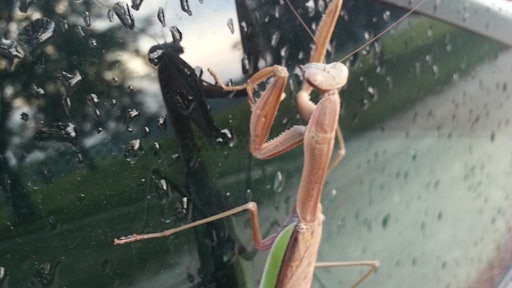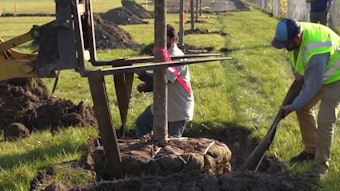
Landscape beneficials are those insects that live in the landscape that are not harmful to that landscape. In fact, certain beneficials actually help lawn care pros take control of the truly destructive insects that are dwelling in their turf and plants. When you look at things this way, it's clear to see that a lawn care pro should have a dual focus when establishing a lawn care program: control insects but conserve the beneficials.
David Shetlar, Ph.D., with The Ohio State University, spoke on this topic at the 2014 Lawn Care Summit in Nashville on January 28. Shetlar said conserving beneficials makes sense from not only an ecological standpoint, but also a financial one. Lawn care pros who take steps to conserve beneficials could gain a marketing advantage. That's because there is an increasing amount of public interest in companies that are more sustainable, along with heightened concern over the destruction of "pretty bugs" like butterflies and honeybees. Many consumers are also interested in preserving wildlife refuges.
Rules of Thumb
Shetlar says there are some general rules of thumb lawn care pros should follow.
- First, try to avoid using neonics, a class of neuro-active insecticides, as a general preventive spray agent.
- Second, try to avoid using neonics where pollinators are or will be active.
- Third, use granular products when possible.
- Fourth, consider switching to a diamide chemistry.
Background on Beneficials
Let's back up a second and take a closer look at landscape beneficials. There are three primary categories:
Biocontrols. Classic insect biocontrols include three types. Predators include ants and wasps, beetles, spiders and mites. Parasites include braconid wasps and certain flies. Pathogens include bacteria, fungi and entomopathogenic nematodes. Biocontrols can help control things like aphids, black cutworms, hornworms and invasive mole crickets.
Decomposers/recyclers. These guys don't get much credit, but play a hugely important role. The earthworm is a good example. Other decomposers include certain nematodes, bacteria, protozoa and fungi.
Pollinators. The most popular pollinator is the honeybee. Others include, at least to some degree, wasps, hover flies, beetles, midges, ants and moths.
Conserving Biological Controls
Shetlar told the Lawn Care Summit crowd that it's important to learn to recognize these favorable biocontrols. The goal should be to provide food and habitat for them to thrive. That means lawn care pros should be using the least-toxic chemicals possible, and target chemicals only where needed.
There are numerous insecticide/miticide "tools" available for use, Shetlar pointed out. Popular miticide tools include Abamectin, Acequinocyl, Bifenazate, Hexythiazox and Spiromesifen.
One newer insecticide tool is neonics (Neonicotinoids), which include Imidacloprid, Acetamiprid, Thiamethoxam, Dinotefuran and Clothianidin. There are also several alternative-type insecticides, including Azadirachtin A&B, Spinosads, Soaps and Chlorantraniliprole (a diamide), among some others.
Shetlar then talked about the effects of neonics on honeybees. According to Shetlar, this is what we know about the non-target effects of neonics:
- Systemic residues can kill off mite predators
- Bees given large doses became disoriented and/or behaved differently
- In turf, predators and decomposers are suppressed for two to four weeks, and then recover
- Application type has major effects
The quest to preserve honeybee populations is being led by Europe, Shetlar pointed out, but is spreading elsewhere—including the U.S. Therefore, U.S. lawn care pros should familiarize themselves with this issue so they can adapt their practices accordingly.
Shetlar cited research that was published in June 2013 (Larson JL, Redmond CT, Potter DA - Assessing Insecticide Hazard to Bumble Bees Foraging on Flowering Weeds in Treated Lawns). Recommendations to avoid bee exposure to neonics in turf include:
- Eliminate flowering weeds before using neonics
- Mow weed flowers before a liquid application
- Mow weed flowers immediately after a liquid application
- Use a granular formulation if at all possible
Shetlar then offered his own opinions on this topic:
- Avoid using neonics if plant will bloom within the next two weeks
- Use neonics after bloom has occurred, if possible
- Use neonics only when needed (same as all insecticides)
- They are not an issue on plants not visited by pollinators (i.e., conifers, weed-free lawns, other grass ornamentals, etc.)
- Use alternative treatments when possible, especially growth regulators, soaps or oils
- Use alternate plants when possible (consult with your customers).




























